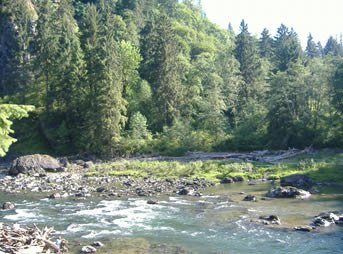New Publications
gary.maguireHansen, E.M. 2015. Phytophthora Species Emerging as Pathogens of Forest Trees. Current Forestry Reports. DOI: 10.1007/s40725-015-0007-7.
Species of Phytophthora are prominent in lists of emerging threats to forest ecosystems. We explore the conditions leading to and the consequences of the emergence of some Phytophthora species from their presumptive coevolved roles in undisturbed forest ecosystems to destructive agents as invasive forest pathogens. Phytophthora species are widespread, relatively abundant, very diverse, and poorly understood in many relatively undisturbed forest ecosystems. Three examples are examined in detail to illustrate the range of pathways to emergence and the varied consequences to forest environments. Phytophthora lateralis causes Port-Orford cedar root disease in western North America and now Europe. Phytophthora ramorum is causing unprecedented mortality in oak and tanoak forests in California, as the cause of sudden oak death, and is killing planted larch in the UK, and Phytophthora cinnamomi kills trees in parts of the world where it has been introduced. Active programs are underway in each case to manage, if not eliminate, their damage. In no case, however, has eradication been achieved. Prevention, by blocking initial introduction, has the highest probability of success.
Roy, B.A.; Alexander, H.M.; Davidson, J.; Campbell, F.T.; Burdon, J.J.; Sniezko, R.; and Brasier, C. 2014. Increasing Forest Loss Worldwide from Invasive Pests Requires New Trade Regulations. Frontiers in Ecology and the Environment. 12(8): 457–465.
Loss of forests due to non-native invasive pests (including insects, nematodes, and pathogens) is a global phenomenon with profound population, community, ecosystem, and economic impacts. We review the magnitude of pest-associated forest loss worldwide and discuss the major ecological and evolutionary causes and consequences of these invasions. After compiling and analyzing a dataset of pest invasions from 21 countries, we show that the number of forest pest invasions recorded for a given country has a significant positive relationship with trade (as indicated by gross domestic product) and is not associated with the amount of forested land within that country. We recommend revisions to existing international protocols for preventing pest entry and proliferation, including prohibiting shipments of non-essential plants and plant products unless quarantined. Because invasions often originate from taxa that are scientifically described only after their introduction, current phytosanitary regulations – which target specific, already named organisms – are ineffective.

